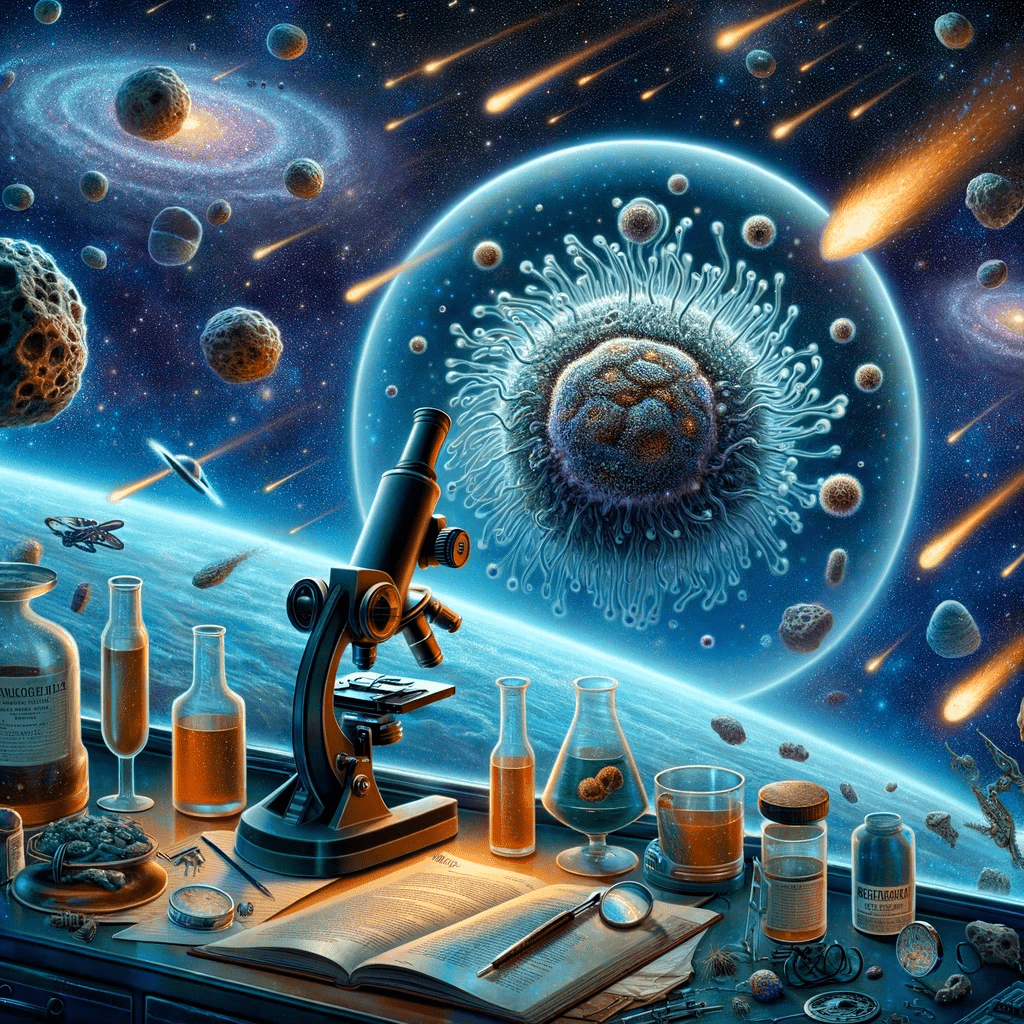Milton Wainwright

Milton Wainwright is a British microbiologist known for his contributions to the field of astrobiology, which is the study of the origin, distribution, and future of life in the universe. He is a prominent figure in the study of unidentified aerial phenomena (UAP) and unidentified flying objects (UFOs), as he has dedicated a significant part of his career to understanding the possible existence of extraterrestrial life.

Wainwright completed his undergraduate studies in microbiology at the University of Nottingham, and later earned his Ph.D. in the same field from the University of Edinburgh. His extensive research in the area of microbial life has allowed him to become an expert in astrobiology, with a focus on the potential presence of extraterrestrial microorganisms.
Following his education, Wainwright has held positions at various institutions, including the University of Sheffield, where he is currently a professor of molecular biology and biophysics. He has been actively involved in several research projects, particularly those that explore the possibility of life in Earth’s upper atmosphere and beyond.
Wainwright has been associated with UAP and UFO research due to his efforts to investigate the existence of extraterrestrial life. He has conducted a series of experiments to collect and analyze samples from the Earth’s stratosphere, where he believes extraterrestrial microorganisms may be present.
Milton Wainwright and his team reported finding a microscopic sphere made of titanium and vanadium in samples collected from the Earth’s stratosphere. The sphere was observed to have a “gooey” biological liquid oozing from its center. Wainwright and his colleagues hypothesized that this discovery could provide further evidence for the existence of extraterrestrial life, as the sphere’s composition and the presence of the biological material suggested an origin outside of Earth (Source: Wainwright, M., et al. (2015). The detection of living cells in stratospheric samples – Implications for panspermia. Journal of Astrobiology and Outreach, 3(3), 134).
Vanadium is a chemical element with the symbol V and atomic number 23. It is a hard, silvery-gray, ductile, and malleable transition metal. Vanadium is found in various minerals and is also present in trace amounts in some crude oils and coal deposits. It is not found naturally in its pure metallic form but can be obtained through the reduction of its compounds.
Vanadium is primarily used in the production of high-strength steel alloys, where it increases the strength, toughness, and wear resistance of the material. It is also used in the manufacturing of certain types of stainless steel, which are resistant to corrosion. In addition, vanadium has applications in the aerospace industry, where it is used in the production of jet engines and high-speed aircraft components due to its excellent heat resistance and strength-to-weight ratio.
In biological systems, trace amounts of vanadium are known to play a role in the enzymatic processes of some organisms. However, its overall function in living organisms is not yet fully understood.
- In 2013, Wainwright and his team discovered microscopic organisms in samples taken from the Earth’s stratosphere, which they claimed could be of extraterrestrial origin. These organisms were unlike any known on Earth, and their presence in the stratosphere led Wainwright to hypothesize that they might have originated from space (Source: Wainwright, M., et al. (2013). Isolation of a diatom frustule fragment from the lower stratosphere (22-27 km) – Evidence for a cosmic origin. Journal of Cosmology, 22, 10023-10032).
- Wainwright has been involved in the study of panspermia, which is the hypothesis that life exists throughout the universe and is distributed by space dust, meteoroids, and other celestial bodies. He believes that extraterrestrial life forms, particularly microorganisms, could have played a role in the development of life on Earth (Source: Wainwright, M. (2010). Panspermia, meteorites, and life on Earth. In J. Seckbach & R. Gordon (Eds.), Divine Action and Natural Selection: Science, Faith, and Evolution (pp. 113-124). World Scientific Publishing).
- Wainwright’s work on extraterrestrial life has been featured in numerous media outlets, such as the BBC and The Guardian. These outlets have covered his findings on the possible presence of microorganisms in the Earth’s stratosphere and their implications for the existence of life beyond our planet (Source: The Guardian, 2013. Balloon sent into stratosphere to find alien life – with surprising results
Critics argue that the presence of microorganisms in the stratosphere could be due to contamination during sample collection or Earth-based organisms being carried to high altitudes by natural processes. However, Wainwright’s work has undoubtedly sparked a renewed interest in astrobiology and the study of life beyond Earth, prompting further research in the field.
Milton Wainwright has authored and co-authored several books, including:
- “Extreme Life: Discovering Life in the Universe” (2001) – This book, written by Wainwright, explores the possibility of life beyond Earth and looks into the concept of panspermia.
- “An Introduction to Environmental Biotechnology” (1999) – Co-authored with Alan T. Bull, this book provides an overview of environmental biotechnology and its applications.


